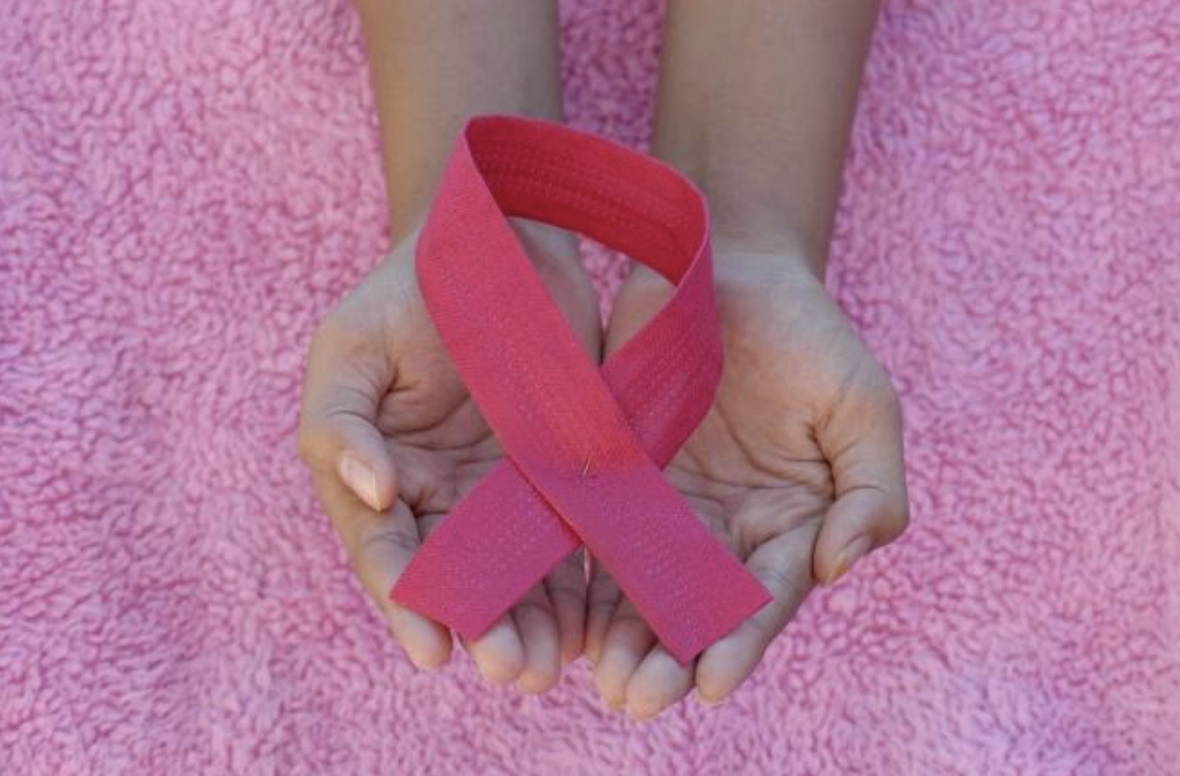October is National Breast Cancer Awareness Month. What better time to get the facts about this deadly disease? More inside.

October 2022. This article is independently written by Shelby Golding. All opinions given are hers. Shelby has been certified as a personal trainer and nutritional specialist since 2007. In 2008, she found her passion for writing about these topics and hasn't looked back.

Another significant statistic from the CDC is that breast cancer is the second leading cause of death among women in the United States. Even though breast cancer mortality rates have been falling since 1989, partly due to early detection and treatment improvements, this disease still claims far too many lives each year.
This guide covers many vital facts about breast cancer in honor of National Breast Cancer Awareness Month.
What Causes Breast Cancer?
There are a variety of factors that can contribute to the development of breast cancer. Some women have a higher risk due to their family history or other health factors, while other women may never know why they developed the disease. Here are some things that can increase your risk:
- Family history: If you have close relatives with breast cancer (mother, sister, daughter), you may be at a higher risk.
- Personal history: If you've been diagnosed with breast cancer, you're more likely to develop it again.
- Age: As you age, you develop a greater risk of developing breast cancer.
- Biological sex: Breast cancer is more common in women than in men.
- Race: White women are slightly more likely to develop breast cancer than African American women, but African American women have a higher risk of mortality from the disease. And Hispanic, Asian, and Native American women have a lower risk of developing and dying from breast cancer.
- Breast density: Women with dense breast tissue (less fat and more glandular and connective tissue) are at a higher risk.
- Obesity: Being overweight or obese following menopause can increase your risk of developing breast cancer.
- Alcohol: Drinking alcohol in excess increases your risk of developing breast cancer.
- Radiation exposure: Women who have had radiation therapy to the chest area, such as for treatment of Hodgkin’s disease, are at a higher risk.
- Hormone replacement therapy: Taking combined estrogen and progesterone after menopause increases your risk of developing breast cancer.
- Birth control pills: Taking combined oral contraceptives (estrogen and progesterone) increases your risk, but this risk returns to normal once you quit taking them.
If you're concerned about your breast cancer risk, talk to your health care professional to better understand your risks and what you can do to lower them.
What are the Different Types of Breast Cancer?
There are several types of breast cancer, and they're classified by the type of cell where the cancer started. The most common type is ductal carcinoma, which begins in the milk ducts. About 80% of all breast cancers are of this type. The other 20% include lobular carcinoma, tubular carcinoma, mucinous carcinoma, and papillary carcinoma.
Lobular carcinoma starts in the milk-producing glands and is usually found in both breasts. Tubular carcinoma makes up a tiny percentage of breast cancers and forms in the milk ducts. Mucinous and papillary carcinoma are even less common and tend to be more aggressive than other types of breast cancer.
Lobular carcinoma starts in the milk-producing glands and is usually found in both breasts. Tubular carcinoma makes up a tiny percentage of breast cancers and forms in the milk ducts. Mucinous and papillary carcinoma are even less common and tend to be more aggressive than other types of breast cancer.
How is Breast Cancer Diagnosed?
If you have any symptoms that could be associated with breast cancer, your doctor will likely order a mammogram, an ultrasound, or a biopsy. A mammogram is an X-ray of the breast that can help detect tumors too small to feel.
An ultrasound, by contrast, uses sound waves to create an image of the breast, and doctors can use it to determine if a mass is solid or filled with fluid. And a biopsy is the removal of tissue from the breast so specialists can examine it for cancer cells.
An ultrasound, by contrast, uses sound waves to create an image of the breast, and doctors can use it to determine if a mass is solid or filled with fluid. And a biopsy is the removal of tissue from the breast so specialists can examine it for cancer cells.
What are the Symptoms of Breast Cancer?
The most common breast cancer symptom is a newly-developed breast lump. This lump is usually a painless, hard mass with irregular edges and is more likely to be cancerous.
But please note that may not always be the case; many lumps turn out to be benign (non-cancerous), and it's always essential to consult a doctor if you notice changes in your breasts.
Other potential symptoms include:
- Sudden swelling of a part of the breast or all of the breast (even if you can't feel a distinct lump)
- Skin dimpling or irritation
- Breast or nipple pain
- Nipple retraction (nipple turns inward)
- Thickening, redness, or scaliness on the nipple or breast skin
- Abnormal nipple discharge
You should report any changes to a medical professional right away. Early detection is key to surviving breast cancer.
What are the Stages of Breast Cancer?
Once breast cancer is diagnosed, the next step is to work with your doctor to determine the stage or how far it has spread. There are four stages of breast cancer:
Stage I: The cancer is small. It hasn't spread outside the breast.
Stage II: The cancer is more prominent. It may have begun to spread to the lymph nodes under the arm.
Stage III: The cancer has spread to the lymph nodes or other tissues near the breast.
Stage IV: The cancer has spread to another area of the body, such as the liver, brain, or bones.
Knowing which stage of breast cancer you have helps your doctor determine the best treatment options.
Stage I: The cancer is small. It hasn't spread outside the breast.
Stage II: The cancer is more prominent. It may have begun to spread to the lymph nodes under the arm.
Stage III: The cancer has spread to the lymph nodes or other tissues near the breast.
Stage IV: The cancer has spread to another area of the body, such as the liver, brain, or bones.
Knowing which stage of breast cancer you have helps your doctor determine the best treatment options.
What are the Treatment Options for Breast Cancer?
The most common treatments for breast cancer include surgery, radiation therapy, and chemotherapy. In addition, you may also receive hormone therapy, targeted therapy, or stem cell transplant. Your treatment(s) will depend on the stage and type of cancer, your age and health, and your personal preferences.
Surgical treatment is the most common approach for breast cancer, and the type of surgery will depend on the stage. For example, a lumpectomy refers to removing the tumor with a small amount of surrounding tissue, while a mastectomy requires removing the entire breast.
Radiation therapy uses powerful X-rays to kill cancer cells, and it's often used after surgery to kill any remaining cancer cells.
Chemotherapy uses specific drugs to kill cancer cells, and it's often recommended in addition to surgery and radiation therapy.
Hormone therapy is used to treat hormone-receptor-positive breast cancers, and it works by preventing the hormones from attaching to and stimulating the growth of the cancer cells.
Targeted therapy is a newer treatment targeting specific genes, molecules, or proteins involved in cancer growth and survival.
A stem cell transplant may be an option for some people with breast cancer. It involves high doses of radiation therapy or chemotherapy to kill the cancer cells before the patient receives healthy stem cells to replace the ones that were lost.
Surgical treatment is the most common approach for breast cancer, and the type of surgery will depend on the stage. For example, a lumpectomy refers to removing the tumor with a small amount of surrounding tissue, while a mastectomy requires removing the entire breast.
Radiation therapy uses powerful X-rays to kill cancer cells, and it's often used after surgery to kill any remaining cancer cells.
Chemotherapy uses specific drugs to kill cancer cells, and it's often recommended in addition to surgery and radiation therapy.
Hormone therapy is used to treat hormone-receptor-positive breast cancers, and it works by preventing the hormones from attaching to and stimulating the growth of the cancer cells.
Targeted therapy is a newer treatment targeting specific genes, molecules, or proteins involved in cancer growth and survival.
A stem cell transplant may be an option for some people with breast cancer. It involves high doses of radiation therapy or chemotherapy to kill the cancer cells before the patient receives healthy stem cells to replace the ones that were lost.
What are the Side Effects of Treatment?
The side effects of breast cancer treatment vary depending on the type you receive. Surgery, for example, can cause pain, bleeding, and infection. And radiation therapy can cause skin changes, fatigue, and nausea. Chemotherapy can cause fatigue, hair loss, and nausea.
It's crucial to talk to your doctor about the possible side effects of treatment and how to manage them.
It's crucial to talk to your doctor about the possible side effects of treatment and how to manage them.
How Can I Reduce My Risk of Developing Breast Cancer?

You can do many things to reduce your risk of developing breast cancer. Some lifestyle changes that may help lower your risk include:
- Eating a healthy diet with plenty of vegetables, fruits, and whole grains
- Exercising regularly
- Maintaining a healthy weight
- Limiting alcohol intake
- Avoiding exposure to radiation and hormone therapy
- Quitting smoking
Consult your doctor about regular screenings and genetic testing. This is double important if you have a family history of breast cancer.
Now That You Know the Facts About Breast Cancer
October is National Breast Cancer Awareness Month. It's a time when we focus on raising awareness about the disease and how to reduce your risk of developing it. We hope you've learned more about breast cancer, its symptoms, and how to get screened. Remember, early detection is essential in the fight against breast cancer!
And if chronic pain ever holds you back from keeping up with life’s many chores (like annual breast cancer screenings), see if the Kailo Pain Patch can help. It’s easy to apply and designed to relieve pain in seconds. And a recent clinical study showed that 97% of patients preferred Kailo over oral medication.
Disclaimer: Kailo should not be used if you have a pacemaker or if you are pregnant. Always consult your doctor or health care professional before using Kailo.
And if chronic pain ever holds you back from keeping up with life’s many chores (like annual breast cancer screenings), see if the Kailo Pain Patch can help. It’s easy to apply and designed to relieve pain in seconds. And a recent clinical study showed that 97% of patients preferred Kailo over oral medication.
Disclaimer: Kailo should not be used if you have a pacemaker or if you are pregnant. Always consult your doctor or health care professional before using Kailo.






